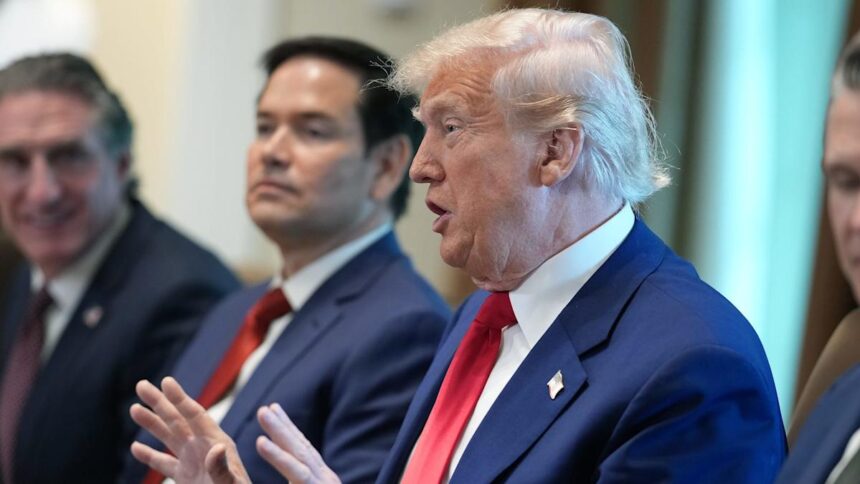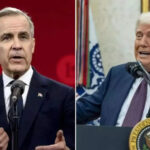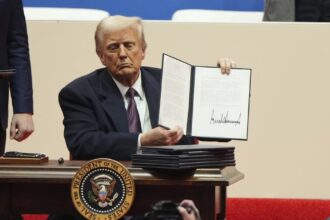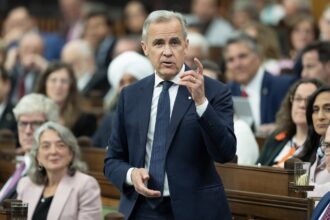The global economy is teetering on a precarious edge as President Donald Trump’s administration signals a dramatic shift in trade policy with China. What began as campaign rhetoric has quickly materialized into concrete policy, sending shockwaves through international markets and raising alarm among economists worldwide.
Yesterday, the White House announced plans to implement sweeping tariffs on Chinese imports starting January 2025, with rates potentially reaching up to 60% on certain goods—nearly double the highest rates imposed during Trump’s first term. This aggressive stance represents a significant escalation in the renewed U.S.-China economic confrontation.
“We’re witnessing the potential dismantling of decades of trade normalization,” explains Dr. Eleanor Zhao, senior fellow at the Toronto Institute for International Economics. “These aren’t just negotiating tactics anymore. The administration appears committed to a fundamental restructuring of Sino-American economic relations, regardless of the immediate costs.”
Financial markets responded swiftly to the announcement, with the S&P 500 dropping 3.2% and the Dow Jones shedding over 900 points. The ripple effects extended globally, with major indexes in Europe and Asia experiencing similar downturns. More concerning, bond markets are now pricing in recession risks at levels not seen since early 2020.
The proposed tariffs would impact approximately $500 billion worth of Chinese imports annually, affecting everything from electronics and furniture to clothing and industrial components. American retailers have already warned that consumers could face price increases of 10-25% on affected goods, potentially adding fuel to inflation concerns just as the Federal Reserve had begun to gain control of price pressures.
For Canada’s economy, deeply integrated with both American and Chinese markets, the fallout could be particularly severe. The Bank of Canada estimates that a full-scale trade war between the world’s two largest economies could reduce Canadian GDP growth by 0.8 to 1.2 percentage points by 2026.
“Canadian businesses find themselves caught in an impossible position,” notes Michael Fernandez, chief economist at Royal Bank of Canada. “Our manufacturing supply chains rely on components from both countries, and disruption on this scale would force painful adjustments with no easy solutions.”
Beijing has already promised “proportional and targeted” retaliation, releasing a preliminary list of American exports that would face reciprocal tariff increases, primarily targeting agricultural products, aircraft, and automobiles. This tit-for-tat approach mirrors the escalation pattern observed during the 2018-2020 trade tensions.
What distinguishes today’s situation from previous trade disputes is the deteriorated diplomatic backdrop. Relations between Washington and Beijing have reached what many foreign policy experts describe as a generational low point, with flashpoints ranging from Taiwan and the South China Sea to technology transfer restrictions and human rights concerns.
“The economic and geopolitical aspects can no longer be separated,” argues Christopher Martinez, former U.S. Trade Representative for Asian Affairs. “Trade policy has become the primary battlefield in a broader strategic competition that will define international relations for decades to come.”
The timing of this trade policy shift has particularly alarmed economic observers. The International Monetary Fund recently reduced its global growth forecast for 2025 to 2.9%, citing persistent inflation pressures and tight monetary conditions across major economies. A trade war between the world’s two largest economies could push this fragile recovery into outright contraction.
“This is precisely the wrong moment to introduce additional economic stressors,” cautions Dr. Sarah Williams, chief economist at Goldman Sachs. “Central banks have limited ammunition left to counter a downturn, and fiscal policy options are constrained by elevated debt levels across advanced economies.”
For ordinary Americans and Canadians, the implications extend beyond macroeconomic statistics. Retirement accounts invested in equity markets face heightened volatility, while households already struggling with elevated living costs could see further pressure on discretionary spending power as import prices rise.
Some manufacturing regions in both countries anticipate potential benefits from “reshoring” as companies reconsider their reliance on Chinese suppliers. However, economic research suggests such transitions typically require years of adjustment and significant capital investment, with the immediate impact more likely to be disruption rather than renaissance.
The fundamental question that policymakers and citizens alike must now confront is whether this dramatic recalibration of trade relations represents necessary strategic realignment or a dangerous economic gamble. As global markets continue to process these developments, the answer may ultimately determine not just the trajectory of U.S.-China relations, but the economic wellbeing of billions around the world.

























